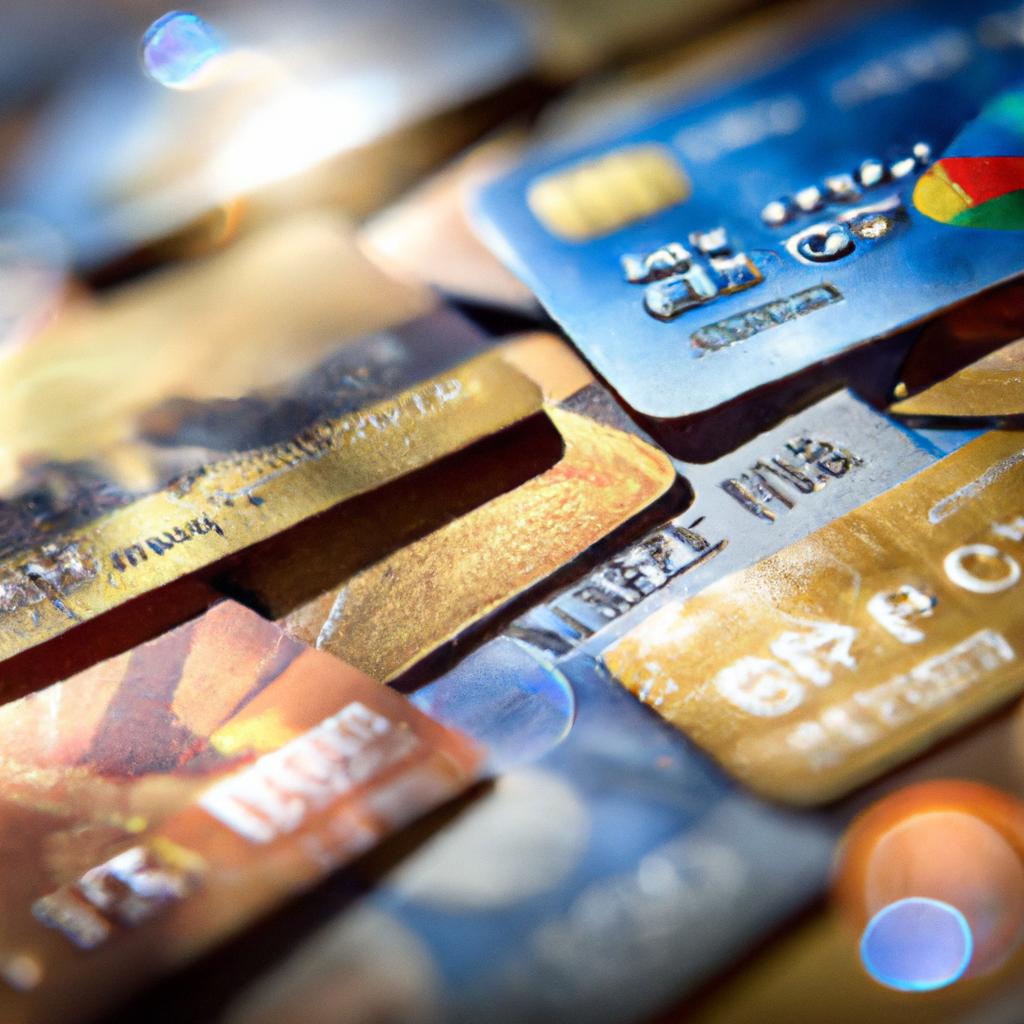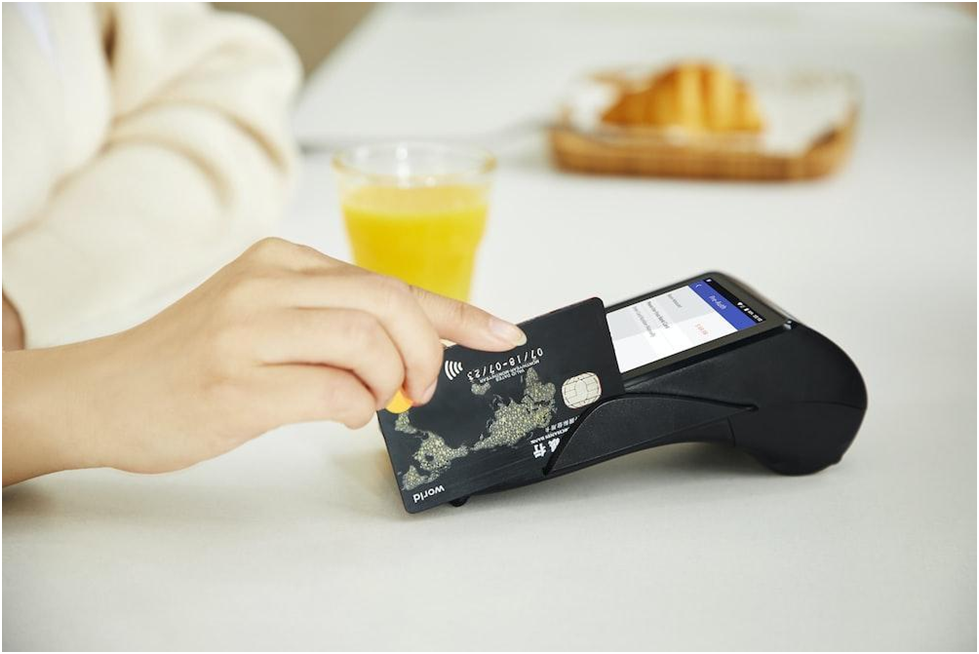Card Payments Industry Regulations and Compliance
Card Payments Industry Regulations and Compliance: Explaining industry regulations, PCI compliance, data protection laws, and how businesses can ensure compliance.
Cross-border transactions have become increasingly common in today’s global economy, with businesses expanding their operations across borders to reach new markets and customers. However, navigating the complex web of compliance requirements associated with these transactions can be a daunting task.
Understanding compliance requirements for cross-border transactions is essential for businesses to avoid running afoul of regulations and facing potentially severe penalties. From legal and regulatory considerations to tax implications, there are a myriad of factors that must be taken into account when conducting cross-border transactions.
One of the key compliance requirements for cross-border transactions is ensuring that all parties involved in the transaction are aware of and adhere to relevant laws and regulations. This includes both the country where the transaction is taking place and the country where the parties are based. Failure to comply with these regulations can result in fines, legal action, and damage to a company’s reputation.
Additionally, businesses must also consider the tax implications of cross-border transactions. Different countries have varying tax laws and rates, and businesses must ensure that they are complying with all relevant tax regulations to avoid penalties and potential audits.
Overall, understanding compliance requirements for cross-border transactions is crucial for businesses looking to expand their operations globally. By staying informed of legal and regulatory considerations, as well as tax implications, businesses can navigate the complexities of cross-border transactions with confidence and success.
In today’s fast-paced digital world, the need for secure and reliable payment solutions is more important than ever. With the rise of e-commerce and online transactions, businesses are constantly searching for ways to streamline their payment processes while still adhering to industry regulations. This is where cloud-based payment solutions come into play.
Cloud-based payment solutions offer a convenient and efficient way for businesses to process transactions securely. By leveraging the power of the cloud, businesses can store and manage payment information in a centralized and secure environment. This not only reduces the risk of data breaches but also helps businesses comply with industry regulations such as PCI-DSS and GDPR.
One of the key advantages of cloud-based payment solutions is their ability to seamlessly integrate with existing systems and processes. This means that businesses can easily adapt to changes in regulations without having to overhaul their entire payment infrastructure. With the flexibility and scalability offered by cloud-based solutions, businesses can quickly respond to new regulations and ensure that their payment processes remain compliant at all times.
Furthermore, cloud-based payment solutions offer advanced security features such as tokenization and encryption, which further protect sensitive payment information from unauthorized access. By utilizing these security measures, businesses can not only protect their customers’ data but also build trust and credibility in the eyes of regulators and consumers alike.
In conclusion, cloud-based payment solutions are a valuable asset for businesses looking to align with industry regulations while providing a secure and efficient payment experience for their customers. By leveraging the power of the cloud, businesses can stay ahead of regulatory changes and maintain compliance while also benefiting from the scalability and flexibility that cloud technology offers.
In a world where cyber attacks are becoming more prevalent, one area that is particularly vulnerable is card payment systems. With the rise of online shopping and the frequent use of credit and debit cards for transactions, ensuring the security of payment data has never been more critical. Implementing robust data security measures in card payment systems is essential to protect both consumers and businesses from potential breaches.
One way to improve data security in card payment systems is to encrypt sensitive information during transmission. By using encryption protocols, such as Secure Socket Layer (SSL) or Transport Layer Security (TLS), data can be securely transmitted between the cardholder and the payment processor. This ensures that hackers cannot intercept and steal valuable information such as card numbers and personal details.
Another important measure is to implement multi-factor authentication for card transactions. This involves requiring users to provide more than one form of verification before completing a payment, such as a password and a one-time code sent to their mobile device. By adding this extra layer of security, businesses can significantly reduce the risk of unauthorized access to payment data.
Regularly updating and patching software is also crucial in maintaining data security in card payment systems. Software vendors often release updates to address vulnerabilities or weaknesses that could be exploited by cyber criminals. By staying current with software updates, businesses can ensure that their payment systems are protected against the latest threats.
In addition, businesses should also consider implementing tokenization technology in their card payment systems. Tokenization replaces sensitive card data with a unique identifier, or token, that is meaningless to hackers. This reduces the risk of data theft, as even if the token is intercepted, it cannot be used to make unauthorized transactions.
Overall, implementing robust data security measures in card payment systems is crucial in today’s digital age. By encrypting data, implementing multi-factor authentication, regularly updating software, and utilizing tokenization technology, businesses can protect themselves and their customers from potential cyber threats. It’s time to take action and ensure the security of card payment systems for a safer and more secure future.
In today’s digital age, online transactions have become an essential part of our daily lives. Whether we’re shopping for the latest trends, booking our next vacation, or ordering food delivery, we all rely on payment gateways to securely process our transactions. But have you ever stopped to think about how these gateways work behind the scenes to keep your data safe?
Payment gateways act as the middleman between the customer, the merchant, and the financial institutions involved in a transaction. Their primary role is to securely transmit sensitive information, such as credit card details, between all parties involved. This process involves encryption, tokenization, and various security protocols to ensure that the data remains confidential and protected from cyber threats.
One of the key ways in which payment gateways ensure data security is through encryption. By encoding the information before it is transmitted, payment gateways make it nearly impossible for cybercriminals to intercept and decipher the data. This ensures that your credit card details and personal information are kept safe from potential hackers.
Tokenization is another important aspect of data security in payment gateways. Instead of storing sensitive information on their servers, payment gateways generate a unique token for each transaction. This token acts as a stand-in for the actual data, reducing the risk of a data breach even if the gateway’s servers are compromised.
In addition to encryption and tokenization, payment gateways implement various security protocols to protect your data. This includes using firewalls, intrusion detection systems, and fraud prevention tools to monitor and block any suspicious activity. By continuously updating and improving their security measures, payment gateways ensure that your information remains safe and secure every time you make a transaction.
Understanding the role of payment gateways in ensuring data security is crucial in today’s cyber-threat landscape. By choosing reputable and reliable gateways that prioritize security, you can shop online with confidence knowing that your information is protected. So the next time you make a purchase online, take a moment to appreciate the vital role that payment gateways play in keeping your data safe and secure.
Payment processing is a vital aspect of any business that deals with online transactions. With the increasing reliance on digital payments, it’s more important than ever for businesses to understand and comply with data protection laws to ensure the safety and security of their customers’ information.
Navigating the complex world of data protection laws can be a daunting task, especially for beginners. But fear not, for we have crafted the ultimate guide to help you understand the ins and outs of data protection laws in payment processing.
First things first, let’s talk about the General Data Protection Regulation (GDPR). This European Union regulation, which came into effect in 2018, sets out strict guidelines for how businesses should collect, store, and use personal data. This means that any business processing payments from EU customers must adhere to the GDPR, regardless of where the business is located.
Next up, we have the Payment Card Industry Data Security Standard (PCI DSS). This standard, developed by major credit card companies, aims to protect cardholder data and ensure secure payment processing. Compliance with PCI DSS is mandatory for any business that accepts credit card payments.
In addition to these regulations, there are a multitude of other data protection laws that businesses must adhere to depending on their location and the nature of their operations. From the California Consumer Privacy Act (CCPA) to the Personal Information Protection and Electronic Documents Act (PIPEDA) in Canada, the world of data protection laws is vast and ever-changing.
So, what can you do to ensure compliance with these laws? Firstly, make sure you have a clear understanding of the data protection laws that apply to your business. Educate yourself and your team on best practices for data security and privacy. Implement robust security measures, such as encryption and access controls, to protect customer data.
At the end of the day, data protection laws are in place to safeguard the privacy and security of individuals’ personal information. By understanding and complying with these laws, you can build trust with your customers and ensure the longevity of your business in an increasingly digitized world. So, take the time to familiarize yourself with data protection laws in payment processing and watch your business thrive!
Do you ever wonder what goes on behind the scenes of those magical moments when you swipe your card and the payment is seamlessly processed? Well, let me tell you, there’s a whole world of complex regulations governing the card payments industry. Navigating this labyrinthine maze can make your head spin, but fear not! We’re here to demystify this enigmatic realm.
Firstly, let’s talk about the big daddy of all regulations: the Payment Card Industry Data Security Standard (PCI DSS). This Herculean framework ensures that your card details are kept under lock and key. It forces businesses to implement safeguards, like encryption and firewalls, to protect your sensitive information from those wicked cyber-criminals lurking in the shadows.
Now, if you think the PCI DSS is complicated, wait until you meet its sibling: the General Data Protection Regulation (GDPR). This bad boy gives you more control over your personal data. It mandates that businesses obtain your explicit consent before storing or processing your information. So, don’t be surprised if you start receiving those pesky emails asking for your permission to keep your data lying around in their digital catacombs.
But it doesn’t end there, my friend. The card payments industry is also haunted by the specter of anti-money laundering regulations. These sneaky rules aim to prevent the bad guys from washing their ill-gotten gains through our beloved cards. So, if you ever feel like you’re being subjected to an interrogation when making a large payment, bear in mind that it’s just a necessary evil to weed out those wicked money-launderers.
Oh, and let’s not forget the good ol’ Fair Credit Reporting Act (FCRA). This regulation ensures that we’re not being falsely accused of running away with the king’s ransom. It compels businesses to keep our credit information accurate and to notify us if someone’s been snooping around our financial secrets.
Now, you might be wondering how on earth businesses manage to stay afloat amidst this regulatory minefield. Well, they have their secret weapon: payment service providers (PSPs). These heroes swoop in to save the day, taking on the burden of compliance, while ensuring that you and I can enjoy our smooth card payments without a care in the world.
So next time you’re tapping your card at the checkout counter, spare a thought for the unsung heroes battling the complexities of regulations to protect us from the relentless onslaught of cyber-villains. And remember, while this industry may seem like a spider’s web of regulations and acronyms, with a trusty PSP by your side, you can navigate through this intricate realm with ease. Stay safe, and happy swiping!
In a world where convenience trumps almost everything, it’s no surprise that contactless payments are skyrocketing in popularity. The sheer simplicity of tapping a card or waving a smartphone to complete a transaction is like magic, whisking away our worries about fumbling for cash or inserting a card and waiting for that agonizing ‘approved’ beep. It’s a dance of elegance and efficiency that keeps us on the move, moving towards a future of seamless transactions.
But as the exhilaration of contactless payments takes center stage, we can’t forget about the ever-present concern of security compliance. While we revel in the convenience of this technology, we must also address the underlying question: How secure are these payments, really?
First, let’s debunk some common myths. Contrary to popular belief, contactless payments are not the wild west of fraud waiting to ensnare us all. In fact, they incorporate layers of safeguards designed to protect our hard-earned money. Encryption techniques scramble our card details, making it virtually impossible for hackers to intercept and decipher them. Moreover, payment providers employ cutting-edge fraud detection systems to identify any suspicious activity and protect us from fraudulent purchases.
But let’s not scoff at the importance of staying vigilant. To ensure that our contactless payments remain secure, we must remain proactive in our pursuit of cybersecurity. Simple steps like updating our devices regularly, using strong passwords, and enabling two-factor authentication can fortify the protective umbrella around us. After all, it’s not just the responsibility of the payment providers; we need to do our part, too.
Looking ahead, it’s crucial for payment providers to continue innovating and reinforcing security measures. The rapid evolution of technology means that hackers are constantly devising new ways to infiltrate and exploit. It’s a race against time, with convenience and safety both vying for pole position on the track of progress.
But here’s the real kicker – contactless payments have proven to be safer than those antiquated magnetic stripe cards we’ve all grown accustomed to. With traditional cards, our personal information is stored on the strip, vulnerable to easy skimming and unauthorized use. Contactless payments, on the other hand, do not transmit this sensitive data, thereby reducing the risk of falling victim to fraudsters lurking in the shadows.
Despite the occasional sensationalized news story, the truth is that contactless payments are paving the way for a more secure, convenient, and swift transaction experience. The key is finding the delicate balance between our desire for expediency and our unwavering need for security compliance. In the end, as long as we remain vigilant, educated, and embrace the ongoing advancements in payment technologies, we can rejoice in the flexibility and peace of mind that contactless payments offer. So, let’s tap away worry-free, giddy with the knowledge that convenience and safety can indeed coexist – a true harmony of modern life.
In the modern digital age, where technology is advancing at a staggering pace, the protection of sensitive information has become a paramount concern. One area where this concern is particularly evident is in the realm of cardholder data protection. With the rise of online transactions and the ever-growing importance of e-commerce, it has become imperative to find innovative ways to safeguard our financial information from prying eyes. Enter encryption and tokenization – two superheroes in the battle against data breaches.
Imagine a world where every time you make a purchase with your credit card, your information is immediately encrypted into an indecipherable code that only the intended recipient can decode. That’s the power of encryption. It takes your cardholder data and transforms it into an unreadable format using sophisticated algorithms, ensuring that even if it falls into the wrong hands, it remains useless and undecipherable. It’s like your personal information is wearing its own invisibility cloak, keeping it hidden from potential threats.
But encryption is just the beginning of this digital fortress. Tokenization steps in to add an extra layer of protection. This superpower works by replacing your sensitive information with unrelated, random characters, making it virtually impossible to trace back to the original data. Much like a shape-shifter that can morph into anyone or anything, tokenization effectively renders your cardholder data useless, even if someone manages to get hold of it.
The beauty of these dynamic duo technologies lies in their ability to work together seamlessly, eliminating vulnerabilities that might arise if used alone. With each transaction, encryption encodes your data, and tokenization replaces it with a random code, ensuring a watertight shield that keeps your information safe and sound.
So, how do these guardian angels work their magic? When you make a purchase online, for instance, your sensitive information is encrypted as it travels from your device to the merchant’s server. Once it reaches its destination, tokenization leaps into action, replacing the encrypted data with a random token. This token is then stored by the merchant, rather than your actual card information. This means that in the event of a data breach, hackers would only lay hands on this tokenized data, which is essentially useless to them. Your card information, on the other hand, remains secure in an undisclosed location, free from prying eyes.
The benefits of encryption and tokenization go far beyond just safeguarding your data. By adopting these technologies, businesses can also protect themselves from the dire consequences of data breaches. Whether it’s reputation damage, regulatory fines, or loss of customer trust, the fallout from such incidents can be catastrophic. Encryption and tokenization act as the ultimate risk mitigators, ensuring that businesses can continue to operate smoothly without the looming specter of data breaches.
In a world where cyber threats are omnipresent, it’s reassuring to know that there are heroes out there working tirelessly to keep our cardholder data safe. Encryption and tokenization represent a dynamic duo, fighting in unison to protect our information from falling into the wrong hands. With their superpowers, we can confidently embrace the convenience of digital transactions, knowing that our financial well-being is well-guarded.
Are you planning to start your business soon? Not sure which credit card terminal you should choose for optimal business growth? We can relate to your thoughts. We’re rapidly transitioning to a digital-first economy where cashless payments are the new normal. Any business that lacks in this domain suffers in terms of profitability and growth. […]
Pay up or pay the consequences! We’ve all heard about payment industry regulations, but do we really know what awaits those who choose to ignore them? Let me paint you a vivid picture of the fallout that follows non-compliance with the rules of this booming industry.
Picture this: you’re blissfully swiping your credit card at your favorite local store, indulging in retail therapy to soothe the chaos of your daily life. Little do you know, the payment industry is a like a well-oiled machine working tirelessly behind the scenes, ensuring your transactions are secure and lightning-fast. But what happens when someone decides to go rogue and ignores the regulations put in place to maintain that efficiency? Oh boy, things can get messy!
Let’s start with the consequences for businesses that tango with non-compliance. Suddenly, they find themselves caught in a web of chaos, their once-thriving operations grinding to a screeching halt. The payment industry is like a big brother, always watching and monitoring for signs of mischief. Once non-compliance is flagged, the fun begins. Expect hefty fines to come knocking on their doors, as regulators show no mercy to those who dare to stray. These penalties can easily cripple even the most established businesses, leaving them bleeding red in the financial department.
But the punishment doesn’t stop there; oh no, friends, it’s just the beginning. With their reputation in tatters, customers abandon ship faster than a sinking submarine. The payment industry relies on trust, and once a business is labeled as non-compliant, that trust plummets faster than a bungee jumper without a rope. The fallout has ripple effects, with worried customers flocking to competitors who uphold the sacred regulations. The guilty party is left scrambling to mend the broken pieces of their reputation, but it’s like trying to sew together a shredded garment with broken needles – a futile and painful exercise.
Now, let’s shift our focus to the individuals who try to dance around the payment industry regulations. Picture this: you’re sitting back, chuckling to yourself as you cleverly dodge the rules, evading taxes and skirting limitations. You feel victorious, as if you’ve outsmarted the system. But little do you know, “the system” has an army of auditors, tearing through digitized mountains of data to pinpoint those who think they can cheat the system.
Once caught, prepare for a rollercoaster ride of financial repercussions. Fines so steep they make your wallet cry in agony will become a regular occurrence. Suddenly, what seemed like a clever strategy turns into a never-ending financial nightmare. The payment industry is not one to back down, and they will dedicate every resource at their disposal to ensure you pay your dues – in every sense of the word. Kiss your savings goodbye, wave farewell to any dreams of an early retirement, and say hello to a world of sleepless nights, ongoing investigations, and the constant buzz of looming consequences.
Non-compliance with payment industry regulations is like playing with fire; it may seem exciting at first, but the consequences are scorching hot. Businesses risk bankruptcy, while individuals face financial ruin and soul-crushing stress. So, let this be a cautionary tale – embrace compliance and save yourself from the fiery abyss of paying the price for negligence. Trust me; it’s a bill you don’t want to settle.











